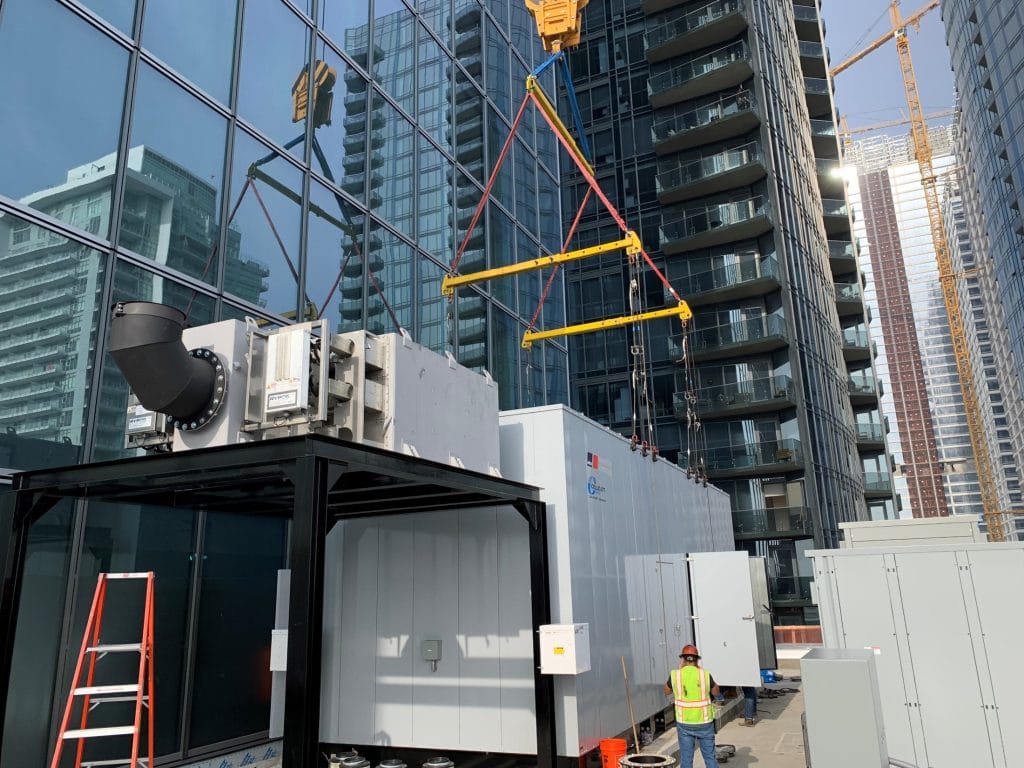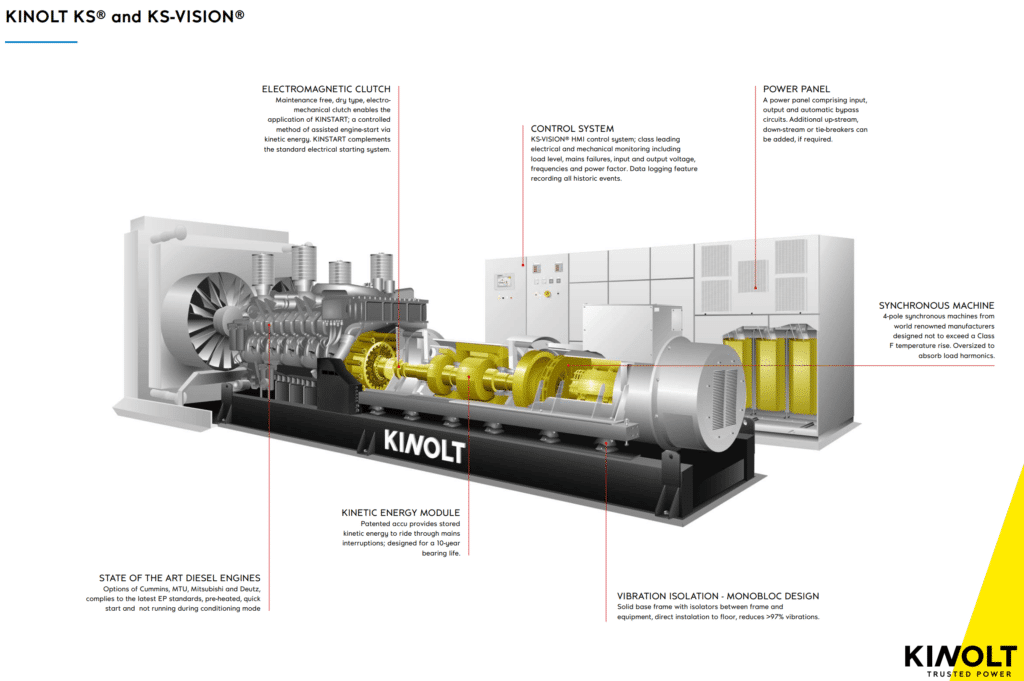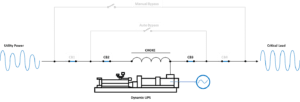The Challenge
In 2019, Collicutt was approached by one of our clients who had just won the electrical design and build contract for a new residential high rise to be built in downtown Los Angeles. Part of that contract included the supply of an emergency backup generator that would provide power for the building during a power grid outage that is so common in California.
Besides the usual backup power requirements for a building of this type, there were a few challenges that made this project unique:
- This unit was going to be placed on the ninth floor of the building.
- Once the unit was in place on the ninth floor, the building would be completed around and above it.
- The crane doing the lifting was being removed immediately following the generator installation to make way for the remaining building construction. This meant that the generator was on the construction schedule’s critical path.
- Because this building is downtown LA, the logistics surrounding the lift of the generator were very complicated. Traffic restrictions had to be minimized and the lift radius of the crane was restricted due to the surrounding buildings and infrastructure.
The Solution
When the contractor started their design process, they reached out to our team at Collicutt. We worked with them and their engineering teams to understand the building electrical loads, design constraints, construction schedule, and the lifting constraints.
We proposed a customized MTU 12V4000 DS1500 solution complete with:
- IBC rating (earthquake rated)
- Rypos DPF and custom mounting rack
- Custom sound attenuating enclosure
- Custom tank to meet fire code for a rooftop design in downtown LA
Disaster Strikes!
The project kicked off and proceeded smoothly until the completed unit left our fabrication facility. But then disaster struck!
Shortly after the truck carrying the generator left the fabrication facility, we received news that they drove under an overpass without checking height restrictions and our custom built generator struck that overpass and was totaled in an instant! The only good news was that no one was injured in the accident.
However, we now had a huge problem! We needed to get a new generator built in record time in the middle of one of the worst global supply chain challenges we have seen in recent times. If we failed to get the generator to site before the building crane was dismantled, we would be on the hook for obtaining permits to close roads in downtown LA and assembling a crane capable of lifting a 1500kW generator to the ninth floor of a building that was already constructed!
We immediately placed the order for the new generator and worked with MTU to expedite the build of the generator in any way they could. We also worked with our fabricator and had them build the enclosure and other custom components ahead of time so that they would just have to set the components in place and bolt them down once the generator was ready. To maintain schedule our fabricator’s staff agreed to work around the clock to complete their work once the generator was delivered to them!
Talk about team work!
The Outcome
Although there were many tense moments throughout this build process, we were able to pull our team together and work through supply chain issues and other manufacturing logistics to get the generator produced as quickly as possible.
In addition to this, thankfully, the building construction had been delayed due to unrelated issues so the building crane was still in place to lift our generator!
This left one final challenge that we had to overcome. Much of the building had now been constructed so the options for lifting the generator to the ninth floor were limited. The building crane had limited lifting capacity and it had limited lifting radius due to the proximity of the surrounding buildings and roadways.

To overcome this challenge, we had the generator transported to a riggers yard where we drained the fluids (oil and coolant) and removed the enclosure. We then dismantled the generator package down to it’s frame. This would allow us to lift the frame, engine, alternator, and radiator in individual lifts.
See the photos below for some of the teardown progress:
- Completed unit arrived at riggers
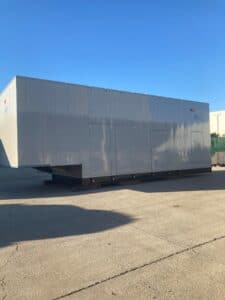
2. The enclosure was removed
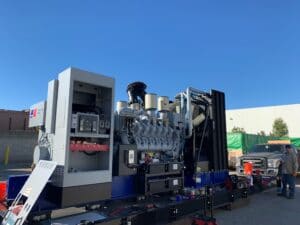
3. Removal of components began
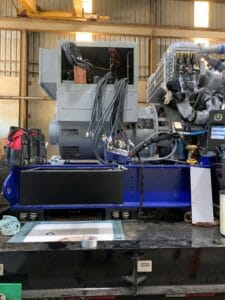
We transported the components from the riggers yard to the construction site over a two day period and lifted each component starting with the frame. The video below illustrates the tight lifting window that was being navigated:
As each component was lifted, we secured it into place and “rebuilt” the generator package on the ninth floor of the building! After two days of crane picks and placements, we had the generator back together in its final location ready for commissioning and startup! This allowed our client to complete construction of their building and remove the building crane without the generator scope causing any further project delays!
This project is a great example of; applied expertise, project management, technician talent, and overall teamwork being used to overcome huge challenges!
For more information on our power generation services or solutions, contact us via email or at the number below:
888.682.6888 or info@collicutt.com

